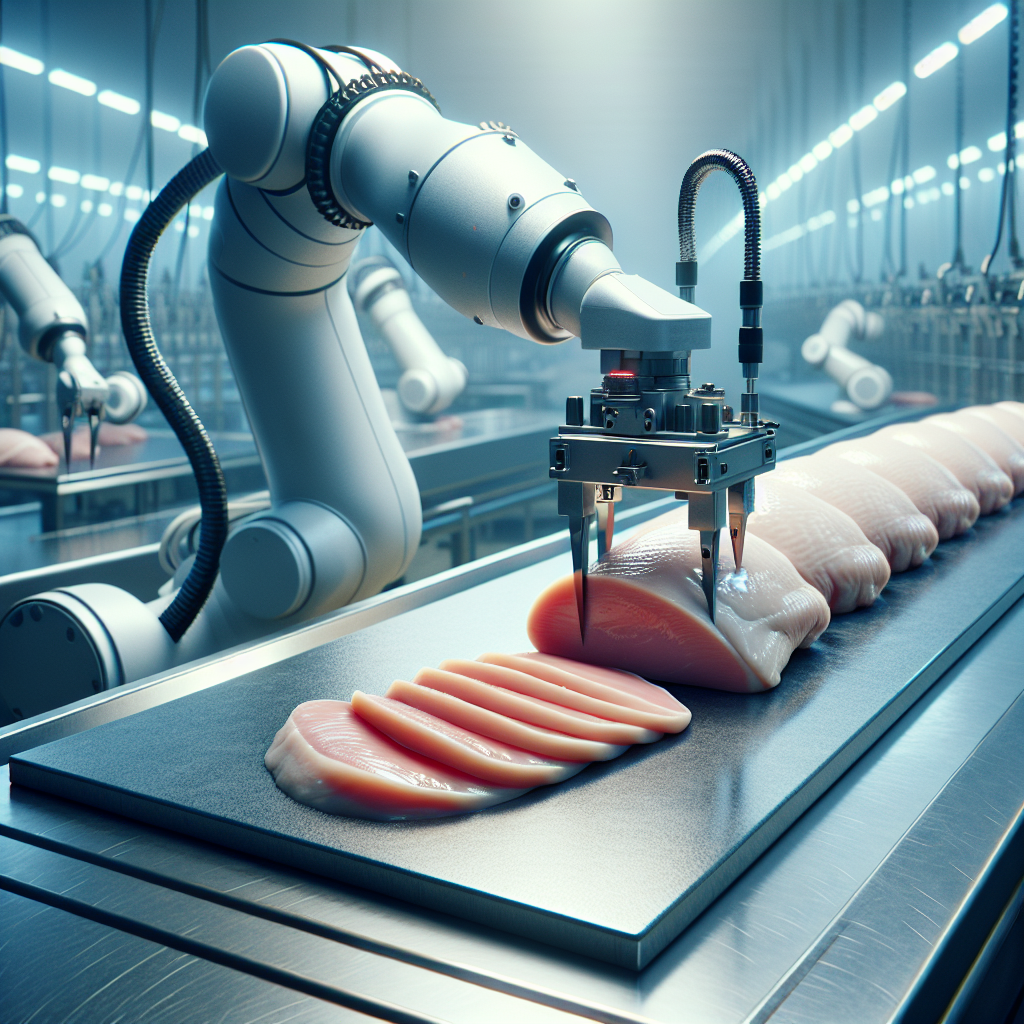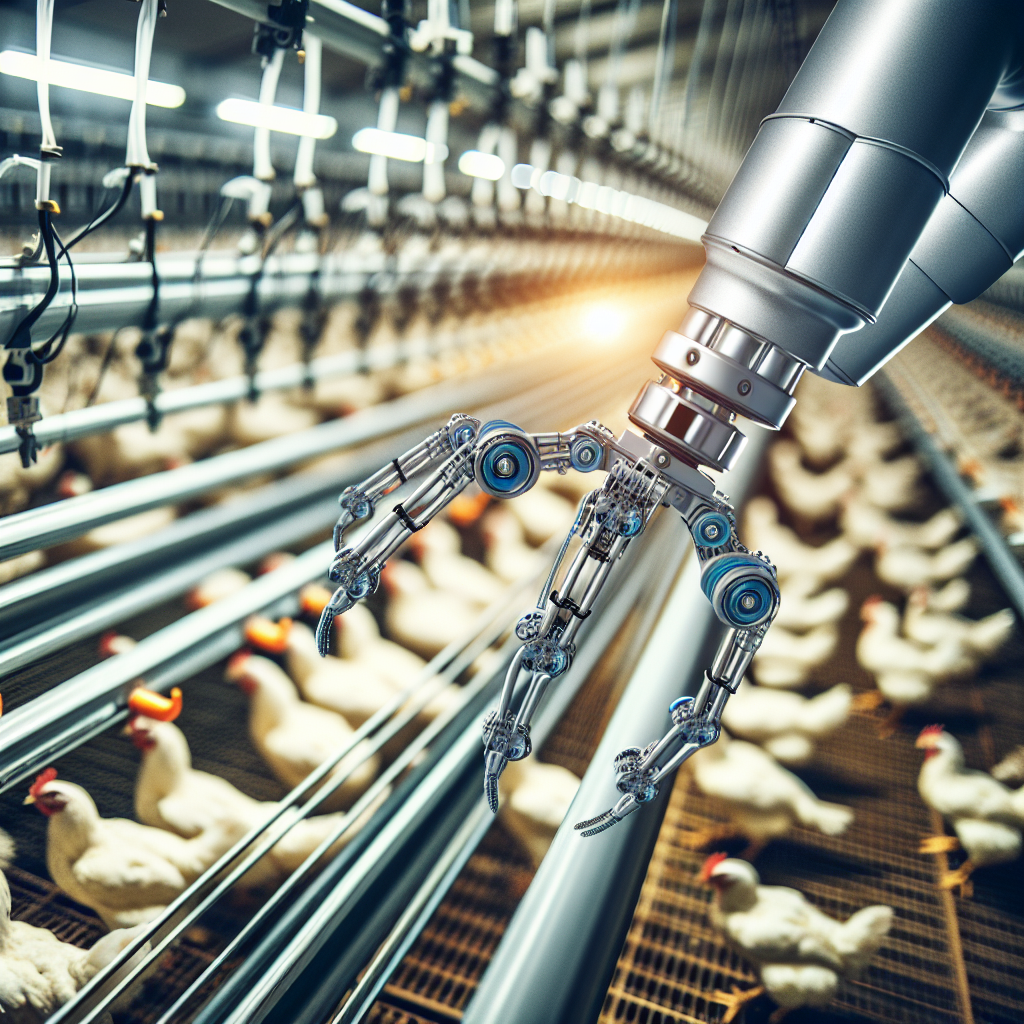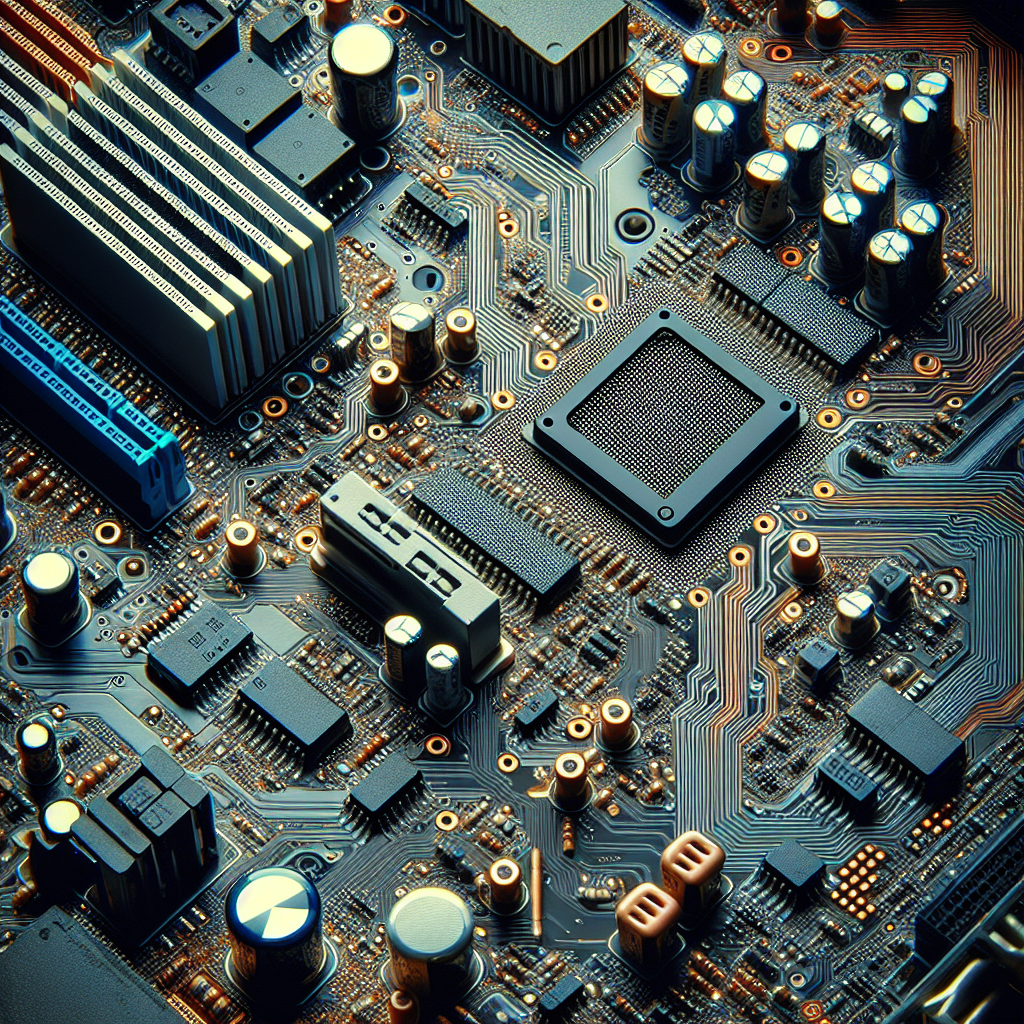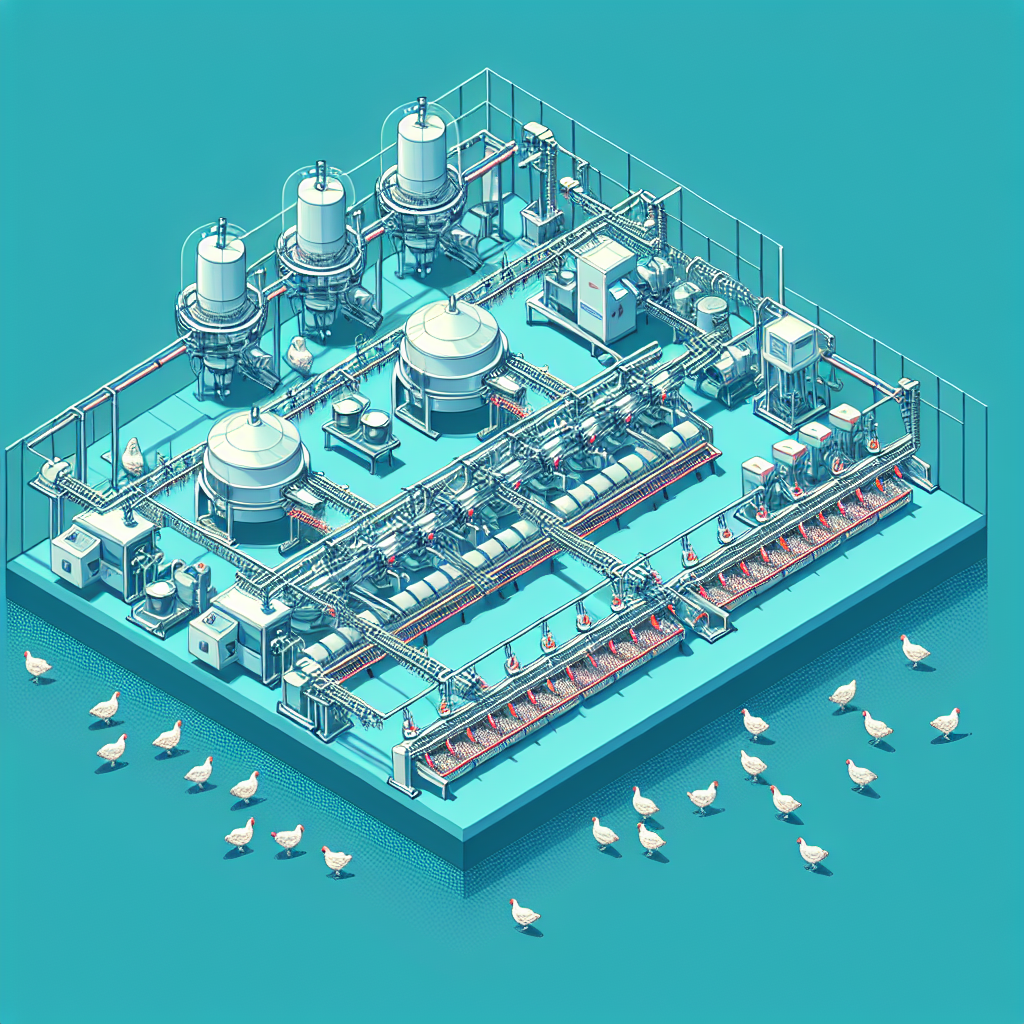If you’ve ever wondered how the chicken products you find in supermarkets are processed and made available for sale, you’re not alone. In today’s fast-paced world, technology plays a crucial role in enhancing efficiency, and the chicken industry is no exception. From automating tasks to improving food safety measures, there are indeed tech solutions that help streamline the processing of chicken products for sale. In this article, we’ll explore some of these innovative solutions that are revolutionizing the way chicken is processed and ensuring a swift journey from farm to fork. So, grab a seat and prepare to discover the fascinating world of technology in the chicken industry.
Automation in Processing
Robotic Cutting and Deboning
Robotic cutting and deboning systems have revolutionized the poultry processing industry by significantly increasing efficiency and productivity. These intelligent machines utilize advanced algorithms and sensors to identify and precisely cut chicken meat, eliminating the need for manual labor. By automating the cutting and deboning process, companies can achieve higher accuracy and consistency in product quality, while also reducing the risk of human errors. Robotic cutting and deboning systems not only boost production rates but also ensure a safer working environment for employees.
Automated Sorting and Packaging
Automated sorting and packaging systems are crucial for optimizing the processing of chicken products. These systems employ sophisticated algorithms and sensors to accurately sort poultry based on various attributes such as size, weight, and quality. By automating this process, companies can streamline their operations and reduce the time and labor required for manual sorting. Automated packaging systems further enhance efficiency by precisely packaging the chicken products into containers or bags, minimizing waste and maximizing productivity. These automated solutions not only improve accuracy and speed but also contribute to overall cost savings in the processing industry.
Advanced Sensors for Quality Control
Quality control is of utmost importance in the poultry processing industry, and advanced sensors play a vital role in ensuring the highest product standards. These sensors can detect various quality parameters such as moisture level, temperature, and foreign objects in the chicken products. By integrating these sensors into the production line, companies can identify and remove any defective or contaminated products before they reach the market, thus preserving the brand reputation and ensuring consumer satisfaction. Advanced sensors not only enable real-time quality monitoring but also help optimize production processes by providing valuable data insights for continuous improvement.
Traceability and Inventory Management
RFID Tracking Systems
RFID (Radio-Frequency Identification) tracking systems are essential for streamlining traceability and inventory management in the poultry processing industry. By attaching RFID tags to each chicken product, it becomes possible to track its entire journey, from farm to fork. These tags contain unique identifiers that can be scanned and recorded at various stages of processing, distribution, and retail. This enables companies to maintain accurate records of product origins, processing dates, and storage conditions, facilitating quick and efficient recall procedures if necessary. RFID tracking systems also enhance inventory management by providing real-time stock information, reducing the risk of overstocking or stockouts.
Barcoding and Labeling Solutions
Barcoding and labeling solutions are widely used in the poultry processing industry to ensure accurate and efficient traceability. Each chicken product is assigned a unique barcode or label that contains key information such as batch number, expiration date, and product specifications. These barcodes or labels can be easily scanned and recorded at different processing stages, facilitating traceability and enabling precise inventory management. Barcoding and labeling solutions not only improve operational efficiency but also enable quick and reliable identification of products throughout the supply chain, minimizing errors and simplifying product tracking.
Inventory Management Software
Inventory management software plays a vital role in streamlining the processing of chicken products for sale. This software enables companies to track and manage their inventory in real-time, optimizing stock levels and reducing wastage. By accurately recording incoming and outgoing products, companies can efficiently manage their production schedules, ensuring a steady supply of chicken products and minimizing the risk of stockouts or excess inventory. Furthermore, inventory management software can generate reports and analytics to identify trends, forecast demand, and optimize supply chain operations. This comprehensive approach to inventory management helps businesses improve profitability and customer satisfaction.
Data Analytics and AI
Predictive Maintenance
Predictive maintenance utilizes data analytics and artificial intelligence to forecast equipment failures or maintenance needs before they occur. In the poultry processing industry, predictive maintenance systems can analyze sensor data from various machines and equipment to detect anomalies and predict potential breakdowns. By identifying and resolving issues proactively, companies can avoid costly downtime and ensure continuous production. Predictive maintenance also enables more efficient maintenance planning, as resources can be allocated based on the actual condition of the equipment rather than fixed schedules.
Demand Forecasting
Accurate demand forecasting is essential for efficient production planning and inventory management. Data analytics and AI-based systems can analyze historical sales data, market trends, and external factors to predict future demand for chicken products. By having a clear understanding of expected demand, companies can optimize their production schedules, allocate resources effectively, and minimize the risk of stockouts or excess inventory. Demand forecasting systems also enable businesses to identify patterns and adjust their strategies accordingly, ensuring they meet consumer demand consistently and maximize profitability.
Quality Assurance and Optimization
Data analytics and AI technologies are increasingly being used for quality assurance and optimization in the poultry processing industry. These systems can analyze large amounts of data from various sources, such as sensor readings, production records, and customer feedback, to identify patterns and anomalies that may impact product quality. By continuously monitoring and analyzing data, companies can proactively identify potential issues and take corrective actions, ensuring consistent product quality. Data analytics and AI also enable process optimization by identifying areas for improvement and providing insights on how to enhance efficiency, reduce waste, and optimize resource allocation.
Food Safety and Sanitation
Automated Cleaning Systems
Automated cleaning systems are essential for maintaining food safety and sanitation standards in poultry processing facilities. These systems utilize advanced technology, such as high-pressure water jets, foam application, and robotic arms, to thoroughly clean production equipment and surfaces. By automating the cleaning process, companies can achieve consistent and effective sanitation, minimizing the risk of contamination and foodborne illnesses. Automated cleaning systems also help reduce water and chemical consumption, resulting in cost savings and environmental benefits.
Sanitization Monitoring Tools
Sanitization monitoring tools play a crucial role in ensuring the effectiveness of cleaning and sanitizing processes in poultry processing facilities. These tools can measure and analyze parameters such as bacteria levels, ATP (Adenosine Triphosphate) readings, and chemical concentration to confirm the cleanliness and hygiene of equipment and surfaces. By regularly monitoring sanitization levels, companies can identify any potential issues and take corrective actions promptly, ensuring food safety standards are met. Sanitization monitoring tools provide real-time feedback and documentation, enabling companies to maintain thorough records and meet regulatory requirements.
Hygiene Compliance Management
Hygiene compliance management systems help streamline and ensure adherence to hygiene standards in poultry processing facilities. These systems typically incorporate checklists, training modules, and documentation tools to facilitate employee training, monitoring, and compliance. By implementing a comprehensive hygiene compliance management system, companies can ensure that employees are trained in proper hygiene practices, equipment cleaning procedures are regularly followed, and hygiene audits and inspections are conducted efficiently. This not only helps maintain food safety and sanitation but also contributes to a positive work culture and employee empowerment.
Supply Chain Optimization
Route Planning and Optimization Software
Route planning and optimization software is crucial for optimizing the transportation of chicken products within the supply chain. These software solutions analyze various parameters such as delivery locations, product characteristics, traffic conditions, and time constraints to generate the most efficient delivery routes. By optimizing routes, companies can reduce transportation costs, minimize delivery time, and improve customer satisfaction. Route planning and optimization software also enables real-time tracking and monitoring of deliveries, ensuring visibility and accountability throughout the supply chain.
Fleet Management Systems
Fleet management systems provide comprehensive tools for managing and optimizing the fleet of vehicles used in the transportation of chicken products. These systems enable companies to efficiently schedule deliveries, track vehicle locations, monitor fuel consumption, and maintain vehicle maintenance records. By utilizing fleet management systems, companies can maximize the utilization of their fleet, reduce fuel costs, and improve overall operational efficiency. These systems also provide valuable insights on driver behavior, enabling companies to implement strategies to enhance safety and reduce accidents.
Real-time Tracking Solutions
Real-time tracking solutions play a vital role in supply chain optimization by providing visibility and traceability of chicken products throughout the entire journey. These solutions utilize technologies such as GPS (Global Positioning System) and IoT (Internet of Things) to track and monitor the location, temperature, and condition of products in transit. By having real-time visibility, companies can proactively address any issues, such as delays or temperature fluctuations, ensuring product quality and compliance with regulations. Real-time tracking solutions also enhance customer satisfaction by providing accurate delivery information and enabling timely updates.
Energy Efficiency and Sustainability
Automated Lighting and HVAC Control
Automated lighting and HVAC (Heating, Ventilation, and Air Conditioning) control systems help optimize energy consumption and reduce environmental impact in poultry processing facilities. These systems utilize sensors, timers, and intelligent algorithms to adjust lighting levels and temperature settings based on occupancy and ambient conditions. By automatically controlling lighting and HVAC systems, companies can minimize energy waste, reduce utility costs, and enhance sustainability efforts. Automated lighting and HVAC control systems also contribute to a better working environment by ensuring optimal lighting conditions and maintaining comfortable temperatures for employees.
Waste Management Systems
Efficient waste management is crucial in the poultry processing industry to minimize environmental impact and comply with regulations. Waste management systems help companies effectively manage and dispose of different types of waste produced during the processing of chicken products. These systems employ technologies such as sorting, recycling, and treatment processes to reduce waste volumes, optimize resource recovery, and minimize landfill disposal. By implementing waste management systems, companies can contribute to sustainability by reducing their carbon footprint and enhancing waste management practices.
Renewable Energy Integration
Renewable energy integration in poultry processing facilities can significantly contribute to energy efficiency and sustainability goals. By utilizing technologies such as solar panels, wind turbines, or biomass systems, companies can generate clean, renewable energy on-site. This renewable energy can be used to power various operations within the facility, reducing reliance on conventional energy sources and decreasing greenhouse gas emissions. In addition to environmental benefits, renewable energy integration can also result in long-term cost savings, as companies become less dependent on fluctuating energy prices.
Smart Packaging and Labeling
Intelligent Packaging Materials
Intelligent packaging materials utilize advanced technologies to enhance product safety, freshness, and information sharing. These materials can incorporate features such as oxygen scavengers, temperature indicators, or freshness sensors to prolong the shelf life of chicken products and ensure optimal quality. Intelligent packaging materials can also provide real-time information on product condition, such as temperature history or expiration dates, facilitating better inventory management and reducing the risk of spoilage. By utilizing intelligent packaging materials, companies can enhance customer satisfaction, minimize food waste, and maintain product integrity.
Smart Labels and Tags
Smart labels and tags play a crucial role in streamlining the processing of chicken products and improving traceability throughout the supply chain. These labels and tags can contain RFID or NFC (Near Field Communication) technology, enabling quick and accurate identification, tracking, and recording of product information. With smart labels and tags, companies can efficiently manage inventory, monitor product movements, and ensure proper product rotation. Moreover, smart labels and tags can provide consumers with useful information, such as nutritional facts, cooking instructions, or allergen labels, enhancing transparency and customer confidence.
Anti-tampering Features
Chicken products are susceptible to tampering and counterfeiting during processing and distribution. Anti-tampering features integrated into packaging, such as tamper-evident seals or security labels, help ensure product integrity and safety. These features provide visible evidence of tampering, alerting consumers and allowing them to make informed choices. By utilizing anti-tampering features, companies can protect their brand reputation, maintain consumer trust, and reduce the risk of liability associated with contaminated or compromised products.
Worker Safety and Ergonomics
Exoskeletons and Wearable Tech
Exoskeletons and wearable tech solutions are increasingly being used in the poultry processing industry to enhance worker safety and ergonomics. Exoskeletons can provide support and assist workers in performing physically demanding tasks, reducing the risk of musculoskeletal injuries and improving productivity. Wearable tech, such as smart glasses or smart gloves, can enhance employee safety by providing real-time feedback, alerts, or guidance on best practices. By implementing exoskeletons and wearable tech solutions, companies can prioritize worker well-being, reduce absenteeism, and create a safer and more productive working environment.
Safety Training Simulations
Safety training simulations are effective tools for providing hands-on training and improving employee awareness of potential hazards in the poultry processing industry. These simulations replicate realistic scenarios and allow employees to practice safety protocols in a controlled environment. By immersing employees in interactive training simulations, companies can enhance their understanding of safety procedures, foster a safety-conscious culture, and reduce the risk of accidents or injuries. Safety training simulations also enable continuous training and evaluation, ensuring that employees are up to date with the latest safety practices and regulations.
Ergonomically Designed Equipment
Ergonomically designed equipment is crucial for reducing the risk of work-related injuries and optimizing worker performance in the poultry processing industry. Equipment such as cutting tools, workstations, and conveyor systems should be designed with ergonomics in mind, considering factors such as posture, reach, and repetitive motion. By implementing ergonomically designed equipment, companies can minimize the physical strain on workers, reduce the risk of musculoskeletal disorders, and improve overall productivity. Ergonomics not only enhances worker safety but also contributes to employee satisfaction, motivation, and retention.
Quality Control and Inspection
Automated Weight and Size Measurement
Automated weight and size measurement systems are essential for ensuring consistent product quality and compliance with industry standards in the poultry processing industry. These systems utilize advanced sensors and algorithms to accurately measure the weight and size of chicken products. By automating this process, companies can achieve higher accuracy, reduce human errors, and ensure uniformity in product specifications. Automated weight and size measurement systems enable efficient quality control and improve overall production efficiency by streamlining sorting, grading, and portioning processes.
X-ray and Metal Detection Systems
X-ray and metal detection systems play a crucial role in ensuring food safety and preventing foreign object contamination in chicken products. These systems utilize advanced technology to detect and remove any foreign materials, such as metal particles or bones, from the products. By incorporating X-ray and metal detection systems into the production line, companies can proactively identify and eliminate potential safety hazards, ensuring the highest quality and safety standards. These systems not only contribute to consumer confidence but also help businesses comply with regulatory requirements and avoid costly product recalls.
Visual Inspection Technologies
Visual inspection technologies, such as machine vision systems and optical sorters, enable efficient and accurate quality control in the poultry processing industry. These technologies utilize cameras, sensors, and image recognition algorithms to inspect chicken products for visual defects, such as discoloration, bruising, or blemishes. By automatically analyzing visual data, companies can identify and sort out defective products, ensuring that only high-quality products reach the market. Visual inspection technologies enhance efficiency by reducing the reliance on manual inspection, improving production rates, and minimizing the risk of human errors.
Internet of Things (IoT) Integration
Connected Machines and Sensors
Connected machines and sensors enable effective monitoring and control of various processes in the poultry processing industry. These IoT-enabled devices can collect and transmit real-time data on parameters such as temperature, humidity, air quality, or machine performance. By integrating connected machines and sensors into the production line, companies can ensure optimal conditions, identify areas for improvement, and proactively address potential issues. IoT integration provides valuable insights for decision-making, enhances operational efficiency, and enables predictive maintenance and process optimization.
Real-time Data Monitoring
Real-time data monitoring is crucial for efficient operations and decision-making in the poultry processing industry. By utilizing IoT technologies and data analytics, companies can access and analyze real-time data from various sources, such as sensors, machines, or environmental conditions. Real-time data monitoring enables proactive decision-making, as companies can identify trends, monitor production performance, and respond to deviations promptly. By having access to accurate and timely information, companies can optimize processes, minimize downtime, and ultimately enhance productivity and profitability.
Remote Control and Management
Remote control and management technologies enable companies to monitor and manage poultry processing operations from a centralized location. By utilizing IoT connectivity and automation, companies can remotely control various processes, such as temperature settings, production line speed, or equipment operations. Remote control and management systems provide flexibility, as managers or operators can access real-time data and control processes from anywhere, ensuring seamless operations and timely interventions. These technologies improve operational efficiency, reduce the need for on-site personnel, and enable quick responses to changing conditions or demands.
In conclusion, the poultry processing industry can benefit greatly from embracing technology solutions to streamline operations and enhance efficiency. Automation in processing, traceability and inventory management, data analytics and AI, food safety and sanitation, supply chain optimization, energy efficiency and sustainability, smart packaging and labeling, worker safety and ergonomics, quality control and inspection, and IoT integration all play essential roles in achieving these objectives. By embracing these technologies and integrating them into their processes, poultry processing companies can improve product quality, optimize resource allocation, enhance food safety, and ultimately increase customer satisfaction.




